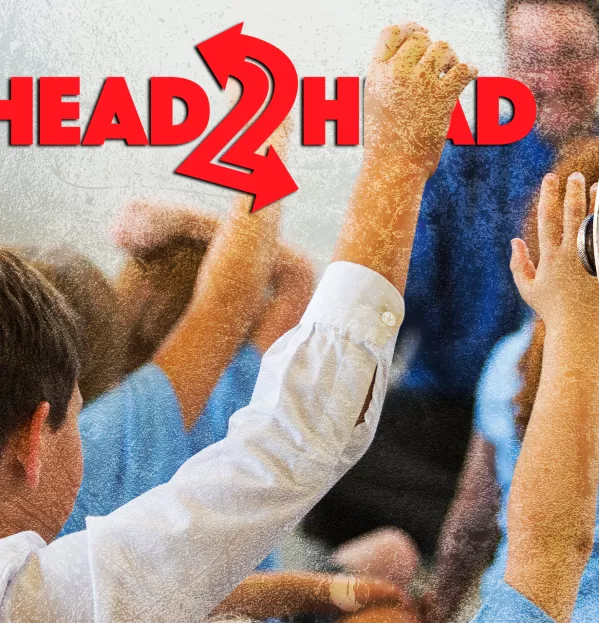
- Home
- Teaching & Learning
- General
- What’s the best alternative to formal lesson observations?
What’s the best alternative to formal lesson observations?

Once a staple of professional development, formal lesson observations have fallen out of favour in recent years.
There are a couple of reasons for this shift: growing awareness about the high levels of teacher stress associated with the practice, combined with evidence from research which suggests that the quality of teaching cannot be gleaned from a single lesson observation - as shown by Robert Coe and others in the 2014 report, What Makes Great Teaching?
As a result, some schools are looking for alternative ways to gain insights into what’s happening in the classroom.
Here, two leaders explain their approaches.
‘Our drop-in model encourages a developmental mindset’
Paul Cline, director of teaching and learning, says:
In September 2021, my school ditched formal observations in favour of a drop-in model.
All teachers are visited once a term by a learning coach for 15-20 minutes. Coaches ask before entering the classroom and are happy to leave if it’s not a good moment. There are no checklists or grades: we go in with a blank piece of paper and an open mind.
Coaches give feedback by email as soon as possible, and if teachers do want to discuss it face-to-face, they can. The email highlights a strength and an area to consider for improvement; if there’s nothing obvious that needs improving, suggestions aren’t given.
However, when they are, it needs to be concrete and lead to something specific that the teacher can actually do. We avoid making comments such as “more pace” or “differentiate better” and, instead, offer feedback that takes the form of an observation and a question to prompt thinking: “I noticed that…I wonder how…?”
Teachers are encouraged to adapt their teaching if they think we’ve suggested something useful. However, there’s not any formal accountability; we have a separate appraisal system that runs parallel to this, and teachers may use feedback from drop-ins to help inform their personal teaching targets.
The feedback is recorded on a central spreadsheet, which is reviewed termly by learning coaches to look for specific trends and identify possible continuing professional development needs. It’s shared with the senior leadership team if there’s something which is identified as a whole-school priority.
It is our first full year using this approach, so it’s difficult to assess the impact so far. Colleagues seem receptive to feedback and drop-ins have led to some productive conversations about teaching and learning.
We don’t have any illusions that this approach is going to lead to an immediate and significant improvement in everyone’s teaching, but we think it’s an important step to developing a mindset in which everyone wants to, and can be supported to, improve.
More teaching and learning:
- Can centralised curriculum resources make you a better teacher?
- How to use play to support self-regulation
- How do we know what makes good teaching?
‘Hand the responsibility over to staff’
Kathy Hersh, senior assistant headteacher, says:
Historically, our teachers had two formal observations each year as part of an appraisal. They weren’t graded and, while they were supportive, staff found them stressful.
In 2021, we decided it was time for a change. We do still have observations but we’ve given staff control over the process. Here’s how it works.
Staff choose two areas of pedagogy (choices include practice and retrieval, explaining and modelling, questioning and feedback) and participate in two observations per year, in the winter and summer terms.
The first is a peer observation - either you observe or are observed for 30 minutes, and have a pedagogical discussion about the learning journey, and any barriers that have been noticed. Teachers reflect on evidence-based research when looking for solutions and this is discussed collaboratively.
In the second, teachers with the same teaching and learning target are put into pairs and observe each other. Some pairs plan the lesson together and it becomes more of a lesson study. A short summary of these conversations is logged on the appraisal system.
Beyond this, staff are encouraged, but not forced, to casually observe each other.
A timetable populated by staff who are willing to be observed is on the staff bulletin, and staff mainly use this if they want to observe someone who is good at something they are struggling with - for example, questioning, or routines and expectations.
So far, the new approach has been successful. Staff are less stressed about results and more focused on how the observations can have a positive impact on student learning.
It’s a big change for them but they know that the aim is to collaborate with others positively, and to harness evidence-based research to bring out improvement.
There will always be staff who are reluctant at first but working with peers in a supportive environment is more likely to encourage them to change than a formal observation, where they can “perform” and then fall back into old habits.
You need a Tes subscription to read this article
Subscribe now to read this article and get other subscriber-only content:
- Unlimited access to all Tes magazine content
- Exclusive subscriber-only stories
- Award-winning email newsletters
- Unlimited access to all Tes magazine content
- Exclusive subscriber-only stories
- Award-winning email newsletters
You need a subscription to read this article
Subscribe now to read this article and get other subscriber-only content, including:
- Unlimited access to all Tes magazine content
- Exclusive subscriber-only stories
- Award-winning email newsletters
- Unlimited access to all Tes magazine content
- Exclusive subscriber-only stories
- Award-winning email newsletters



